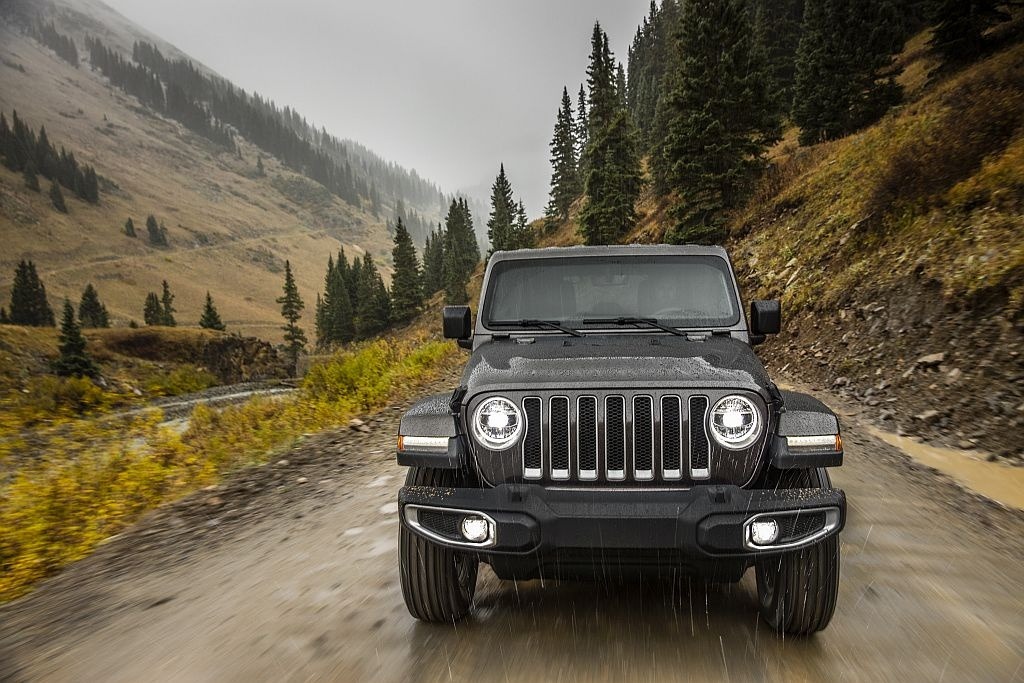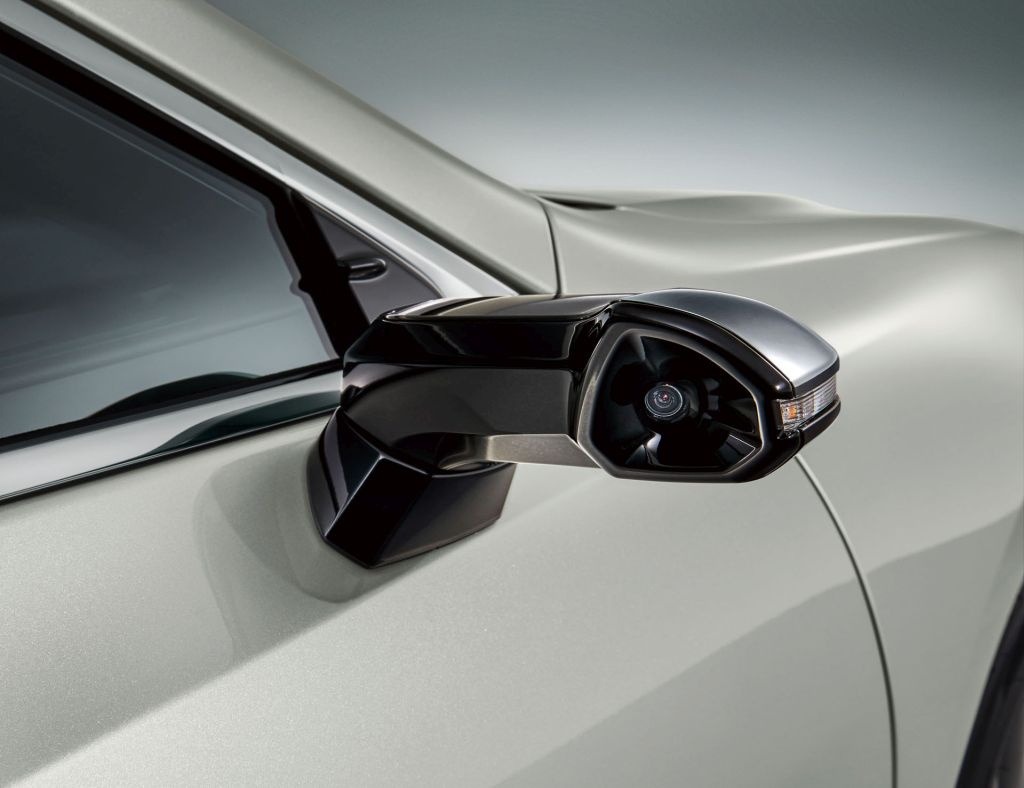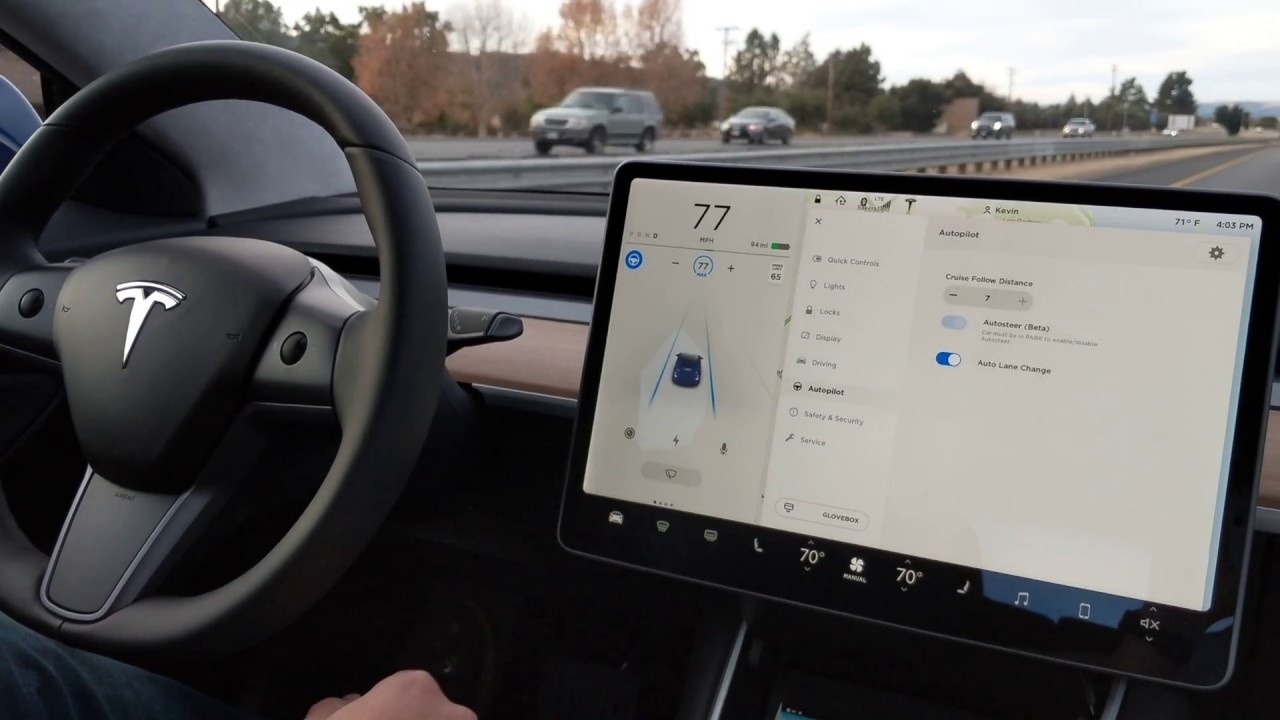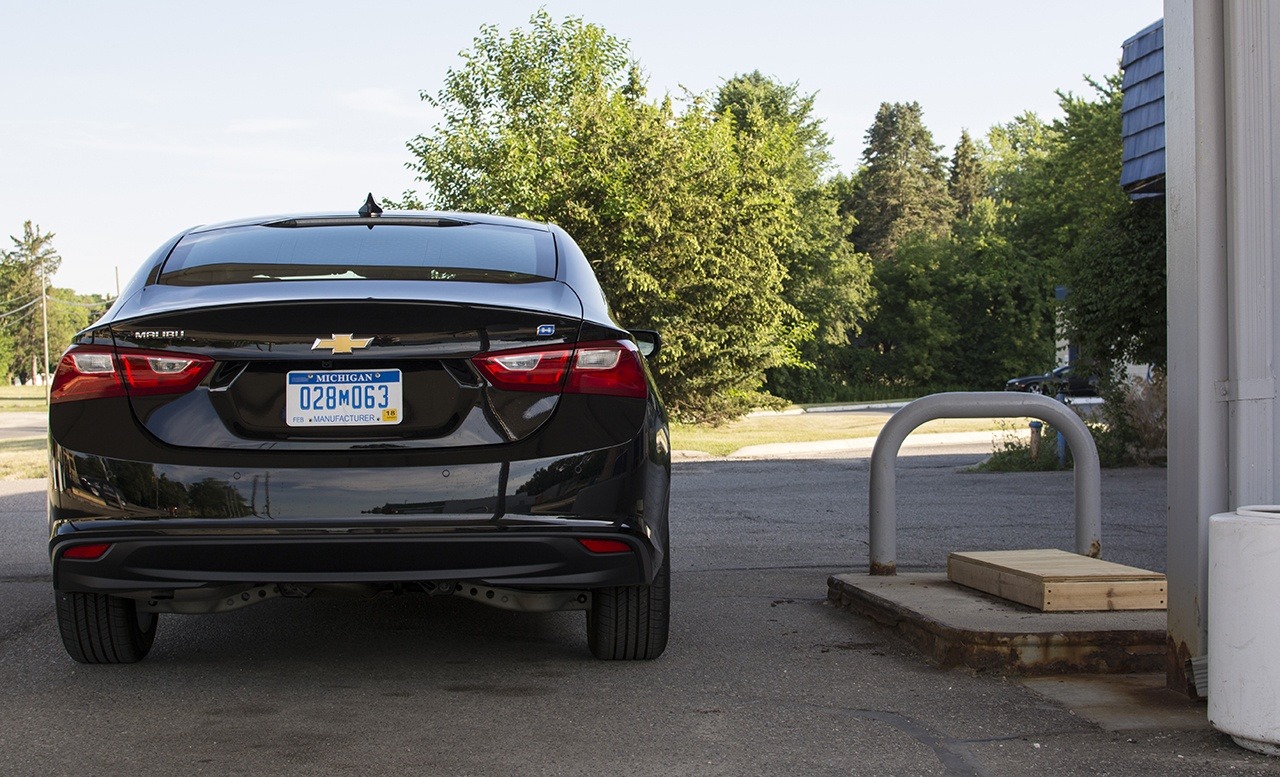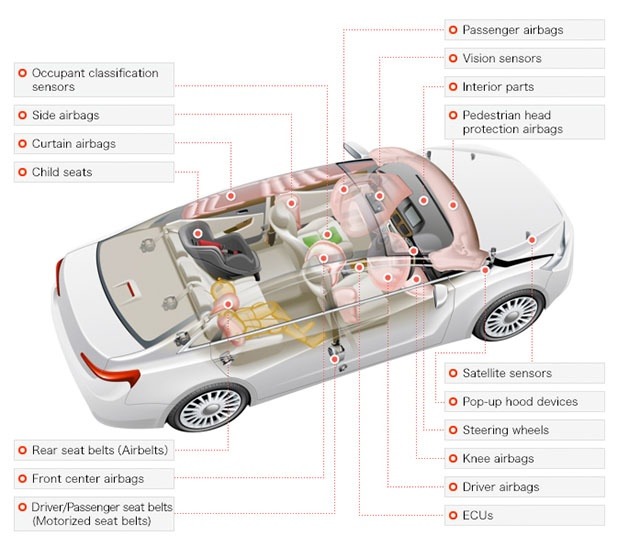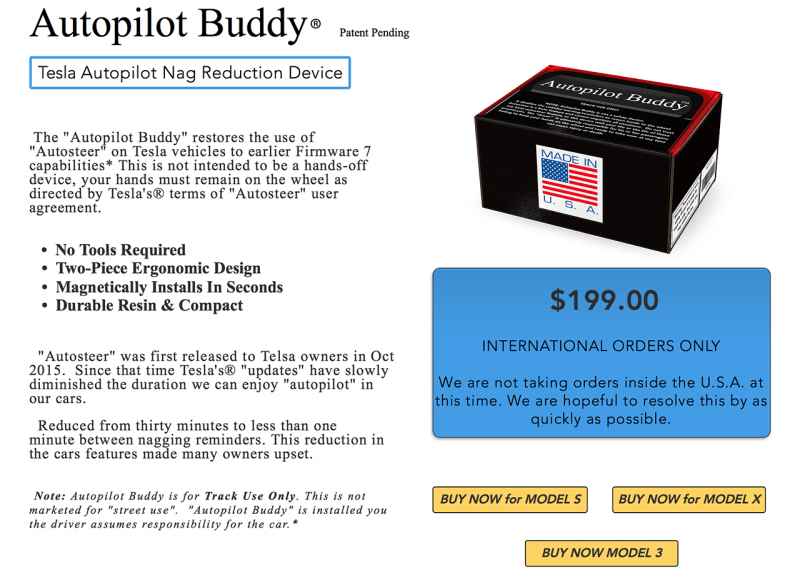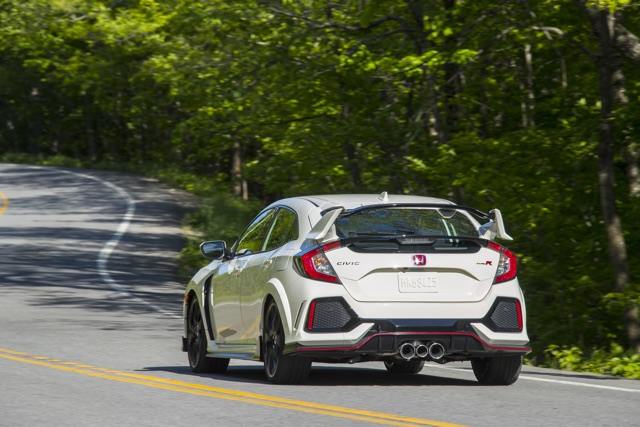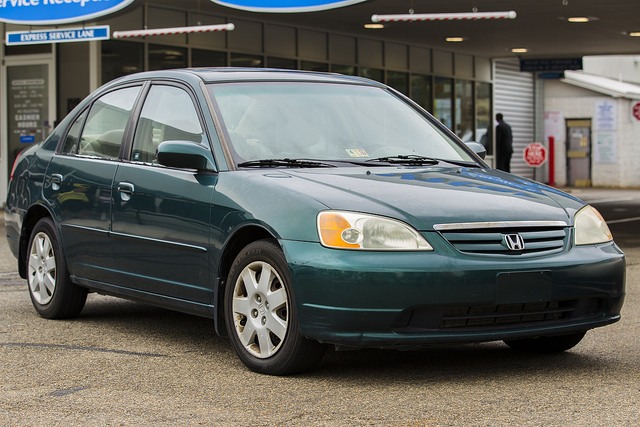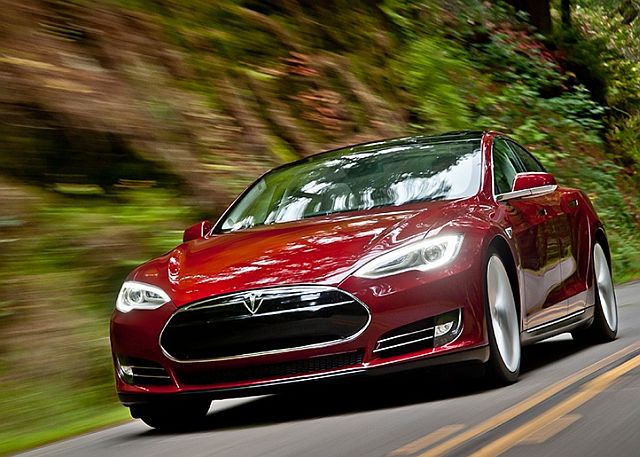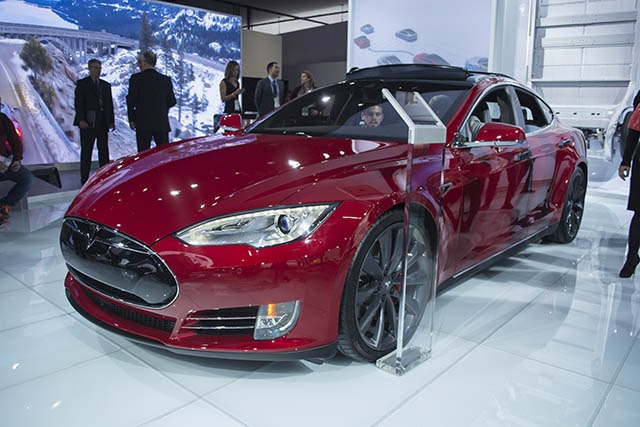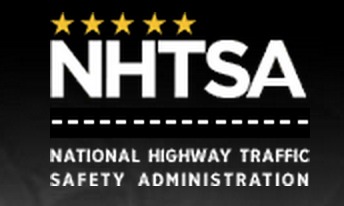Search the Community
Showing results for tags 'nhtsa'.
-

NHTSA Investigating Wrangler Over Potential Improper Frame Welds
Drew Dowdell posted an article in Jeep
The JL Generation of the Jeep Wrangler may have improper frame welds according to an investigation by the National Highway Traffic Safety Administration (NHTSA). The investigation started after a Wrangler owner complained about a frame that had been improperly welded at the factory. As a result of that improper weld, the owner found a number of other problems stemming from the original issue. While no findings have been released, there is enough evidence for the NHTSA to warrant further investigation and the agency has asked FCA for more information regarding the issue. The NHTSA seemed to think that FCA's explanation "did not adequately address whether the frame weld quality deficiencies compromise the structure integrity of the vehicles, and therefor may pose an unreasonable risk to motor vehicle safety." The investigation further aims to determine if the earlier reported 'death wobble' is related to the frame welding issues. FCA issued a fix for the 'death wobble' last month, but did not turn it into a full recall. Jeep will install a new steering damper, free of charge, to anyone who wishes to have the work completed. -
The JL Generation of the Jeep Wrangler may have improper frame welds according to an investigation by the National Highway Traffic Safety Administration (NHTSA). The investigation started after a Wrangler owner complained about a frame that had been improperly welded at the factory. As a result of that improper weld, the owner found a number of other problems stemming from the original issue. While no findings have been released, there is enough evidence for the NHTSA to warrant further investigation and the agency has asked FCA for more information regarding the issue. The NHTSA seemed to think that FCA's explanation "did not adequately address whether the frame weld quality deficiencies compromise the structure integrity of the vehicles, and therefor may pose an unreasonable risk to motor vehicle safety." The investigation further aims to determine if the earlier reported 'death wobble' is related to the frame welding issues. FCA issued a fix for the 'death wobble' last month, but did not turn it into a full recall. Jeep will install a new steering damper, free of charge, to anyone who wishes to have the work completed. View full article
-
The National Highway Traffic Safety Administration has begun testing vehicles that have cameras in place of real mirrors. The request to test such devices goes back to March of 2014 when the Alliance of Automobile Manufacturers along with Tesla filed a petition with the NHTSA to get approval to install based rear or side vision cameras and screens in their vehicles. Daimler filed a similar petition in 2015 for their heavy duty trucks. Japan and Europe have already approved the technology. The first car with cameras replacing the side mirrors was the Lexus ES sold in Japan, followed by the Audi e-tron in Europe back in December. Both vehicles are sold in the U.S. with standard mirrors instead of the cameras. Honda's coming Honda e will have the technology standard when it goes on sale in Europe later this year. Mirrorless systems are an area where the legislation has not yet caught up with the technology according to Mark Dahncke of Audi.
-
The National Highway Traffic Safety Administration has begun testing vehicles that have cameras in place of real mirrors. The request to test such devices goes back to March of 2014 when the Alliance of Automobile Manufacturers along with Tesla filed a petition with the NHTSA to get approval to install based rear or side vision cameras and screens in their vehicles. Daimler filed a similar petition in 2015 for their heavy duty trucks. Japan and Europe have already approved the technology. The first car with cameras replacing the side mirrors was the Lexus ES sold in Japan, followed by the Audi e-tron in Europe back in December. Both vehicles are sold in the U.S. with standard mirrors instead of the cameras. Honda's coming Honda e will have the technology standard when it goes on sale in Europe later this year. Mirrorless systems are an area where the legislation has not yet caught up with the technology according to Mark Dahncke of Audi. View full article
-

2017 NHTSA Report that Tesla Autopilot Cut Crashes 40% Called "Bogus"
Drew Dowdell posted an article in Tesla
Back in 2017, the NHTSA released a report on the safety of Tesla's Autopilot system after the fatal crash of a Tesla owner in 2016. That report claimed that the use of Autopilot, or more precisely the lane-keeping function called Autosteer, reduced crash rates by 40%. In that original crash, the owner repeatedly ignored warnings to resume manual control of the vehicle. Critics questioned whether Autopilot was encouraging drivers to pay less attention to the road. The NHTSA report appeared to put those concerns to rest. Later, when a second driver died in an Autopilot related accident, Tesla CEO Elon Musk pointed to the NHTSA study and the 40% increase in safety claim. Now, 2 years after the original report. According to a report by Arstechnica, a third party has analyzed the data and found the 40% claim to be bogus. Originally the NHTSA data on Autopilot crashes was not publically available when Quality Control Systems, a research and consulting firm, requested it under a Freedom of Information Act request. The NHTSA claimed the data from Tesla was confidential and would cause the company harm if released. QCS sued the NHTSA and in September of last year, a federal judge granted the FOI request. What QCS found was that missing data and poor math caused the NHTSA report to be grossly inaccurate. The period in question covered vehicle both before and after Autopilot was installed, however, a significant number of the vehicles in the data set provided by Telsa have large gaps between the last recorded mileage before Autopilot was installed and the first recorded mileage after installation. The result is a gray area where it is unknown if Autopilot was active or not. In spite of this deficiency, the NHTSA used the data anyway. In the data provided only 5,714 vehicles have no gap between the pre and post Autopilot mileage readings. When QCS ran calculations again, they found that crashes per mile actually increased 59% after Autopilot was installed. Does that mean that a Tesla using Autopilot makes a crash 59% more likely? The answer to that is no for a number of reasons. First is that the sample size QCS had to work with is a very small percentage of Tesla’s total sales. Secondly, the data is only representative of vehicles with version 1 of Tesla’s Autopilot, a version that Tesla hasn’t sold since 2016. Tesla stopped quoting the NHTSA report around May of 2018, possibly realizing something was fishy with the data. They have since taken to their own report stating that cars with Autopilot engaged have fewer accidents per mile than cars without it engaged. This has some statistical fishiness to it as well. Autopilot is only meant to be engaged on the highway and due to the higher rate of speed all vehicles have a lower rate of accidents per mile. We may just have to wait until more data is available to find out if Tesla Autopilot and systems similar to it make crashed that much less likely. -
Back in 2017, the NHTSA released a report on the safety of Tesla's Autopilot system after the fatal crash of a Tesla owner in 2016. That report claimed that the use of Autopilot, or more precisely the lane-keeping function called Autosteer, reduced crash rates by 40%. In that original crash, the owner repeatedly ignored warnings to resume manual control of the vehicle. Critics questioned whether Autopilot was encouraging drivers to pay less attention to the road. The NHTSA report appeared to put those concerns to rest. Later, when a second driver died in an Autopilot related accident, Tesla CEO Elon Musk pointed to the NHTSA study and the 40% increase in safety claim. Now, 2 years after the original report. According to a report by Arstechnica, a third party has analyzed the data and found the 40% claim to be bogus. Originally the NHTSA data on Autopilot crashes was not publically available when Quality Control Systems, a research and consulting firm, requested it under a Freedom of Information Act request. The NHTSA claimed the data from Tesla was confidential and would cause the company harm if released. QCS sued the NHTSA and in September of last year, a federal judge granted the FOI request. What QCS found was that missing data and poor math caused the NHTSA report to be grossly inaccurate. The period in question covered vehicle both before and after Autopilot was installed, however, a significant number of the vehicles in the data set provided by Telsa have large gaps between the last recorded mileage before Autopilot was installed and the first recorded mileage after installation. The result is a gray area where it is unknown if Autopilot was active or not. In spite of this deficiency, the NHTSA used the data anyway. In the data provided only 5,714 vehicles have no gap between the pre and post Autopilot mileage readings. When QCS ran calculations again, they found that crashes per mile actually increased 59% after Autopilot was installed. Does that mean that a Tesla using Autopilot makes a crash 59% more likely? The answer to that is no for a number of reasons. First is that the sample size QCS had to work with is a very small percentage of Tesla’s total sales. Secondly, the data is only representative of vehicles with version 1 of Tesla’s Autopilot, a version that Tesla hasn’t sold since 2016. Tesla stopped quoting the NHTSA report around May of 2018, possibly realizing something was fishy with the data. They have since taken to their own report stating that cars with Autopilot engaged have fewer accidents per mile than cars without it engaged. This has some statistical fishiness to it as well. Autopilot is only meant to be engaged on the highway and due to the higher rate of speed all vehicles have a lower rate of accidents per mile. We may just have to wait until more data is available to find out if Tesla Autopilot and systems similar to it make crashed that much less likely. View full article
-

EPA Doubted Claims of New Fuel Economy Regs Would Save Lives
William Maley posted an article in Automotive Industry
When the EPA and NHTSA unveiled the proposal for revised fuel economy standards, there was a key part that brought up a lot of debate: The claim that the new regulations would reduce the number of fatalities and crashes. As we pointed out in our story, there were a number of holes in that argument. It seems we were not the only ones questioning this. Yesterday, the review of the proposal done by the White House's Information and Regulatory Affairs was made public. In it are hundred of pages of correspondence, analysis, and drafts. Bloomberg went through the documents and found that EPA officials were questioning the rationale put forth by NHTSA on reducing crashes. The “proposed standards are detrimental to safety, rather than beneficial,” wrote EPA staff in a memo dated June 18th. Their basis for this was analysis done by the agency after making a number of corrections to a Transportation Department model. It showed that freezing fuel economy standards "would lead to an increase in traffic fatalities and boost the overall fatality rate." The EPA questioned the validity of the Obama administration standards “coincided with an increase in highway fatalities” claim. “What data supports the implication that the standards to date have led to fatality increases?” said the EPA in feedback on June 29th. Also, the EPA questioned NHTSA's model that overestimates the number of old and unsafe vehicles on the road if the new regulations go into effect. How the EPA and NHTSA came to an agreement is unclear at the moment. What it does reveal is that the dispute between the two agencies could affect plans to try and create a comprise that would appease both automakers and California regulators. “These emails are but a fraction of the robust dialogue that occurred during interagency deliberations for the proposed rule. EPA is currently soliciting comments on eight different alternative standards and we look forward to reviewing any new data and information,” said EPA spokesman John Konkus. Irene Gutierrez, an attorney with the Natural Resources Defense Council sees it a bit differently. "...that even the EPA had deep reservations about the bogus safety arguments being pushed by the Department of Transportation. We know that automakers can make cars both more fuel efficient and safer; it’s heartening to find out EPA’s technical experts agree.” Source: Bloomberg- 21 comments
-
- disagreement
- epa
-
(and 2 more)
Tagged with:
-
When the EPA and NHTSA unveiled the proposal for revised fuel economy standards, there was a key part that brought up a lot of debate: The claim that the new regulations would reduce the number of fatalities and crashes. As we pointed out in our story, there were a number of holes in that argument. It seems we were not the only ones questioning this. Yesterday, the review of the proposal done by the White House's Information and Regulatory Affairs was made public. In it are hundred of pages of correspondence, analysis, and drafts. Bloomberg went through the documents and found that EPA officials were questioning the rationale put forth by NHTSA on reducing crashes. The “proposed standards are detrimental to safety, rather than beneficial,” wrote EPA staff in a memo dated June 18th. Their basis for this was analysis done by the agency after making a number of corrections to a Transportation Department model. It showed that freezing fuel economy standards "would lead to an increase in traffic fatalities and boost the overall fatality rate." The EPA questioned the validity of the Obama administration standards “coincided with an increase in highway fatalities” claim. “What data supports the implication that the standards to date have led to fatality increases?” said the EPA in feedback on June 29th. Also, the EPA questioned NHTSA's model that overestimates the number of old and unsafe vehicles on the road if the new regulations go into effect. How the EPA and NHTSA came to an agreement is unclear at the moment. What it does reveal is that the dispute between the two agencies could affect plans to try and create a comprise that would appease both automakers and California regulators. “These emails are but a fraction of the robust dialogue that occurred during interagency deliberations for the proposed rule. EPA is currently soliciting comments on eight different alternative standards and we look forward to reviewing any new data and information,” said EPA spokesman John Konkus. Irene Gutierrez, an attorney with the Natural Resources Defense Council sees it a bit differently. "...that even the EPA had deep reservations about the bogus safety arguments being pushed by the Department of Transportation. We know that automakers can make cars both more fuel efficient and safer; it’s heartening to find out EPA’s technical experts agree.” Source: Bloomberg View full article
- 21 replies
-
- disagreement
- epa
-
(and 2 more)
Tagged with:
-

New Audit Rakes NHTSA Over the Coals On Takata Recall
William Maley posted an article in Automotive Industry
A new audit released by the U.S. Transportation Department’s Office of Inspector General rips the National Highway Traffic Safety Administration (NHTSA) over its handling of the Takata airbag recall. In the report, the Inspector General says NHTSA's recall monitoring process "does not ensure that remedies are reported completely and in a timely manner," nor does it "verify recall completion rates, although it has the authority to do so." Other issues the audit found included the long time it took the agency to determine the scope of the Takata recall and missing documents due to limited monitoring and inadequate procedures. "In June 2014, RMD [NHTSA's Recall Management Division] received a recall notification for Takata airbag inflators in over 140,000 vehicles. The notification stated that the manufacturer planned to tell owners to take their vehicles to dealerships for repairs in February 2015. However, as of February 2018, RMD had not received the manufacturer's remedy documents, and [the Office of Defects Investigation's] recall recordkeeping system does not indicate that RMD staff requested those documents," the report said. The Inspector General makes six recommendations including better training for staff, creating a system to handle missing documents and communications, and documenting various lessons from the Takata recall. NHTSA in a letter said it "did not endorse all of the report’s findings," but did agree to some of the recommendations. The agency has come under fire for a number of years due to its poor handling of various auto safety issues, including Toyota's unattended acceleration crisis and GM's ignition switch mess. This latest audit is fourth since 2011 by the inspector general. The last audit done in 2015 said NTHSA failed to investigate safety issues carefully, hold automakers accountable, and adequately train their staff which resulted in “significant safety concerns being overlooked.” Source: Reuters -
A new audit released by the U.S. Transportation Department’s Office of Inspector General rips the National Highway Traffic Safety Administration (NHTSA) over its handling of the Takata airbag recall. In the report, the Inspector General says NHTSA's recall monitoring process "does not ensure that remedies are reported completely and in a timely manner," nor does it "verify recall completion rates, although it has the authority to do so." Other issues the audit found included the long time it took the agency to determine the scope of the Takata recall and missing documents due to limited monitoring and inadequate procedures. "In June 2014, RMD [NHTSA's Recall Management Division] received a recall notification for Takata airbag inflators in over 140,000 vehicles. The notification stated that the manufacturer planned to tell owners to take their vehicles to dealerships for repairs in February 2015. However, as of February 2018, RMD had not received the manufacturer's remedy documents, and [the Office of Defects Investigation's] recall recordkeeping system does not indicate that RMD staff requested those documents," the report said. The Inspector General makes six recommendations including better training for staff, creating a system to handle missing documents and communications, and documenting various lessons from the Takata recall. NHTSA in a letter said it "did not endorse all of the report’s findings," but did agree to some of the recommendations. The agency has come under fire for a number of years due to its poor handling of various auto safety issues, including Toyota's unattended acceleration crisis and GM's ignition switch mess. This latest audit is fourth since 2011 by the inspector general. The last audit done in 2015 said NTHSA failed to investigate safety issues carefully, hold automakers accountable, and adequately train their staff which resulted in “significant safety concerns being overlooked.” Source: Reuters View full article
-
The National Highway Traffic Safety Administration has sent a cease-and-desist letter to Dolder, Falco and Reese Partners LLC, the company behind an aftermarket device called the Autopilot Buddy. Autopilot Buddy is a small, weighted device that clips onto either side of the wheel to place minor amounts of torque. This fools the Autopilot system into thinking that a driver has their hands on the wheel. The company markets the device as "nag reduction device", reducing the amount of warnings to tell driver to keep their hands on the wheel. The company has a disclaimer on Autopilot Buddy that states, This would be ok if a video demonstrating the product didn't appear to be on a public road of sorts. “A product intended to circumvent motor vehicle safety and driver attentiveness is unacceptable. By preventing the safety system from warning the driver to return their hands to the wheel, this product disables an important safeguard, and could put customers and other road users at risk,” said NHTSA Deputy Administrator Heidi King in a statement. NHTSA has given Dolder, Falco and Reese Partners LLC till June 29th to respond and certify to NHTSA "that all U.S. marketing, sales, and distribution of the Autopilot Buddy has ended." Source: Roadshow, NHTSA View full article
- 2 replies
-
- autopilot
- cease and desist
-
(and 2 more)
Tagged with:
-

NHTSA Issues A Cease and Desist To the Autopilot Buddy
William Maley posted an article in Automotive Industry
The National Highway Traffic Safety Administration has sent a cease-and-desist letter to Dolder, Falco and Reese Partners LLC, the company behind an aftermarket device called the Autopilot Buddy. Autopilot Buddy is a small, weighted device that clips onto either side of the wheel to place minor amounts of torque. This fools the Autopilot system into thinking that a driver has their hands on the wheel. The company markets the device as "nag reduction device", reducing the amount of warnings to tell driver to keep their hands on the wheel. The company has a disclaimer on Autopilot Buddy that states, This would be ok if a video demonstrating the product didn't appear to be on a public road of sorts. “A product intended to circumvent motor vehicle safety and driver attentiveness is unacceptable. By preventing the safety system from warning the driver to return their hands to the wheel, this product disables an important safeguard, and could put customers and other road users at risk,” said NHTSA Deputy Administrator Heidi King in a statement. NHTSA has given Dolder, Falco and Reese Partners LLC till June 29th to respond and certify to NHTSA "that all U.S. marketing, sales, and distribution of the Autopilot Buddy has ended." Source: Roadshow, NHTSA- 2 comments
-
- autopilot
- cease and desist
-
(and 2 more)
Tagged with:
-
The only way you can purchase a Honda Civic Type R is the fully loaded Touring trim with adaptive dampers, navigation, LED headlights, etc. Possibly, you might have to pay a 'market adjustment' price - i.e. a dealer adding a few grand to the price to make a quick buck. But 2018 could see Honda introduce a base version of the Type R. The Truth About Cars uncovered NHTSA certification papers filed by American Honda for the 2018 model year. The papers reveal two Civic Type R models, 'Type R' and 'Touring'. Both models have the same engine code - K20C1 which corresponds to the turbocharged 2.0L four-cylinder. As we reported back in June, Honda is considering adding more Civic Type R variants to "broaden the audience and keep sales fresh." One way to that is to introduce a lower-cost model. Honda already sells one in other markets that lose out on the navigation system, parking sensors, and LED lighting. Source: The Truth About Cars
- 16 comments
-
- civic type r
- honda
-
(and 3 more)
Tagged with:
-
The only way you can purchase a Honda Civic Type R is the fully loaded Touring trim with adaptive dampers, navigation, LED headlights, etc. Possibly, you might have to pay a 'market adjustment' price - i.e. a dealer adding a few grand to the price to make a quick buck. But 2018 could see Honda introduce a base version of the Type R. The Truth About Cars uncovered NHTSA certification papers filed by American Honda for the 2018 model year. The papers reveal two Civic Type R models, 'Type R' and 'Touring'. Both models have the same engine code - K20C1 which corresponds to the turbocharged 2.0L four-cylinder. As we reported back in June, Honda is considering adding more Civic Type R variants to "broaden the audience and keep sales fresh." One way to that is to introduce a lower-cost model. Honda already sells one in other markets that lose out on the navigation system, parking sensors, and LED lighting. Source: The Truth About Cars View full article
- 16 replies
-
- civic type r
- honda
-
(and 3 more)
Tagged with:
-
Fiat Chrysler Automobiles isn't out of the dog house when it comes to vehicles rolling away. A few months after issuing a recall on a number of models equipped with the stubby transmission lever for rolling away, NHTSA is investigating models equipped with the rotary knob gear selector for the same problem. The investigation is looking at the 2013–2016 Ram 1500 and the 2014–2016 Dodge Durango which have the rotary knob selector. NHTSA has gotten 43 complaints about these models moving away. Out of the 43 complaints, 25 have resulted in crashes and another 9 resulted in injuries. NHTSA also says that 34 complaints said the vehicle was moving while in park. FCA said it is cooperating with the investigation. In the meantime, FCA and NHTSA are urging owners to engage the parking brake Source: NHTSA, Reuters View full article
- 16 replies
-
- fca
- investigation
-
(and 2 more)
Tagged with:
-

NHTSA Investigates Dodge Durango and Ram 1500s Rolling Away
William Maley posted an article in Chrysler
Fiat Chrysler Automobiles isn't out of the dog house when it comes to vehicles rolling away. A few months after issuing a recall on a number of models equipped with the stubby transmission lever for rolling away, NHTSA is investigating models equipped with the rotary knob gear selector for the same problem. The investigation is looking at the 2013–2016 Ram 1500 and the 2014–2016 Dodge Durango which have the rotary knob selector. NHTSA has gotten 43 complaints about these models moving away. Out of the 43 complaints, 25 have resulted in crashes and another 9 resulted in injuries. NHTSA also says that 34 complaints said the vehicle was moving while in park. FCA said it is cooperating with the investigation. In the meantime, FCA and NHTSA are urging owners to engage the parking brake Source: NHTSA, Reuters- 16 comments
-
- fca
- investigation
-
(and 2 more)
Tagged with:
-
The National Highway Traffic Safety Administration (NHTSA) has issued an urgent warning to owners of certain 2001 to 2003 Honda and Acura model to stop driving them due to these models being equipped with Takata airbags. Lab tests done by NHTSA revealed that the airbag inflator in these vehicles have a 50 percent chance of the bag rupturing, causing metal shards to enter the interior and possibly injuring or even killing a person. "With as high as a 50 percent chance of a dangerous air bag inflator rupture in a crash, these vehicles are unsafe and need to be repaired immediately. Folks should not drive these vehicles unless they are going straight to a dealer to have them repaired immediately, free of charge," said U.S. Transportation Secretary Anthony Foxx. The vehicles involved include, 2001-2002 Honda Accord 2001-2002 Honda Civic 2002 Honda CR-V 2002 Honda Odyssey 2003 Honda Pilot 2002-2003 Acura 3.2 TL 2003 Acura 3.2CL According to NHTSA, there 313,000 vehicles that need to have their airbags replaced. One of the main causes for the rupturing is moisture getting inside the inflator. Vehicles in high humid areas such as Florida are susceptible to this. In a statement, Honda agreed with NHTSA's findings and urged owners to get their vehicles to a dealer as soon as possible. Source: Reuters, NHTSA Press Release is on Page 2 NHTSA: New test data on particular subset of Takata air bag inflators shows substantially higher risk NHTSA calls on news media and public to assist in finding unrepaired high-risk vehicles WASHINGTON – New test data on a particular subset of defective Takata air bag inflators in certain model-year 2001-2003 Honda and Acura vehicles show a far higher risk of ruptures during air bag deployment, prompting an urgent call from the National Highway Traffic Safety Administration to ensure that unrepaired vehicles in this population are found and fixed before they cause further injuries or fatalities. “With as high as a 50 percent chance of a dangerous air bag inflator rupture in a crash, these vehicles are unsafe and need to be repaired immediately,” said U.S. Transportation Secretary Anthony Foxx. “Folks should not drive these vehicles unless they are going straight to a dealer to have them repaired immediately, free of charge.” The higher-risk inflators are in certain 2001-2003 Honda and Acura vehicles: 2001-2002 Honda Civic 2001-2002 Honda Accord 2002-2003 Acura TL 2002 Honda CR-V 2002 Honda Odyssey 2003 Acura CL 2003 Honda Pilot The air bag inflators in these particular vehicles contain a manufacturing defect which greatly increases the potential for dangerous rupture when a crash causes the air bag to deploy. Ruptures are far more likely in inflators in vehicles that have spent significant periods of time in areas of high absolute humidity—particularly Florida, Texas, other parts of the Gulf Coast, and Southern California. Testing of the inflators from these vehicles show rupture rates as high as 50 percent in a laboratory setting. The vehicles in question were recalled between 2008 and 2011. Honda has reported that more than 70 percent of this higher-risk population of vehicles has already been repaired, but approximately 313,000 vehicles with this very dangerous defect remain unrepaired. The risk posed by the airbag inflators in these vehicles is grave, and it is critical they be repaired now to avoid more deaths and serious injuries. NHTSA and Honda are asking for the news media and public’s assistance to find the remaining unrepaired vehicles. Drivers of these vehicles should immediately visit SaferCar.gov to check whether their vehicle has any outstanding safety recalls. Those that do should contact their nearest dealer to schedule a no-cost immediate repair. Replacement parts for these vehicles are available immediately. “The air bag inflators in this particular group of vehicles pose a grave danger to drivers and passengers that must be fixed right away,” said NHTSA Administrator Dr. Mark Rosekind. "Drivers should visit SaferCar.gov or contact their local dealer to check whether their vehicle is affected. If it is, they should have the vehicle repaired immediately for free at an authorized dealer. We commend Honda for taking additional actions to get these vehicles repaired.” Though the vehicles are already under recall, NHTSA ordered Takata to perform additional ballistic testing following recent reports of ruptures. Eight of the 10 confirmed U.S. fatalities due to Takata ruptures — including the most recent in Fort Bend County, Texas — were in this population of vehicles. Honda has committed to immediately taking additional actions to enhance their efforts to find and fix recalled vehicles. Honda will provide additional information about their efforts. NHTSA has also directed Honda to report weekly on the progress of vehicle repairs. NHTSA is also expanding its own direct consumer outreach, including a paid media campaign and a series of outreach events in high-risk areas this summer. NHTSA has also engaged the vehicle insurance industry to help locate the unremedied vehicles.
-
The National Highway Traffic Safety Administration (NHTSA) has issued an urgent warning to owners of certain 2001 to 2003 Honda and Acura model to stop driving them due to these models being equipped with Takata airbags. Lab tests done by NHTSA revealed that the airbag inflator in these vehicles have a 50 percent chance of the bag rupturing, causing metal shards to enter the interior and possibly injuring or even killing a person. "With as high as a 50 percent chance of a dangerous air bag inflator rupture in a crash, these vehicles are unsafe and need to be repaired immediately. Folks should not drive these vehicles unless they are going straight to a dealer to have them repaired immediately, free of charge," said U.S. Transportation Secretary Anthony Foxx. The vehicles involved include, 2001-2002 Honda Accord 2001-2002 Honda Civic 2002 Honda CR-V 2002 Honda Odyssey 2003 Honda Pilot 2002-2003 Acura 3.2 TL 2003 Acura 3.2CL According to NHTSA, there 313,000 vehicles that need to have their airbags replaced. One of the main causes for the rupturing is moisture getting inside the inflator. Vehicles in high humid areas such as Florida are susceptible to this. In a statement, Honda agreed with NHTSA's findings and urged owners to get their vehicles to a dealer as soon as possible. Source: Reuters, NHTSA Press Release is on Page 2 NHTSA: New test data on particular subset of Takata air bag inflators shows substantially higher risk NHTSA calls on news media and public to assist in finding unrepaired high-risk vehicles WASHINGTON – New test data on a particular subset of defective Takata air bag inflators in certain model-year 2001-2003 Honda and Acura vehicles show a far higher risk of ruptures during air bag deployment, prompting an urgent call from the National Highway Traffic Safety Administration to ensure that unrepaired vehicles in this population are found and fixed before they cause further injuries or fatalities. “With as high as a 50 percent chance of a dangerous air bag inflator rupture in a crash, these vehicles are unsafe and need to be repaired immediately,” said U.S. Transportation Secretary Anthony Foxx. “Folks should not drive these vehicles unless they are going straight to a dealer to have them repaired immediately, free of charge.” The higher-risk inflators are in certain 2001-2003 Honda and Acura vehicles: 2001-2002 Honda Civic 2001-2002 Honda Accord 2002-2003 Acura TL 2002 Honda CR-V 2002 Honda Odyssey 2003 Acura CL 2003 Honda Pilot The air bag inflators in these particular vehicles contain a manufacturing defect which greatly increases the potential for dangerous rupture when a crash causes the air bag to deploy. Ruptures are far more likely in inflators in vehicles that have spent significant periods of time in areas of high absolute humidity—particularly Florida, Texas, other parts of the Gulf Coast, and Southern California. Testing of the inflators from these vehicles show rupture rates as high as 50 percent in a laboratory setting. The vehicles in question were recalled between 2008 and 2011. Honda has reported that more than 70 percent of this higher-risk population of vehicles has already been repaired, but approximately 313,000 vehicles with this very dangerous defect remain unrepaired. The risk posed by the airbag inflators in these vehicles is grave, and it is critical they be repaired now to avoid more deaths and serious injuries. NHTSA and Honda are asking for the news media and public’s assistance to find the remaining unrepaired vehicles. Drivers of these vehicles should immediately visit SaferCar.gov to check whether their vehicle has any outstanding safety recalls. Those that do should contact their nearest dealer to schedule a no-cost immediate repair. Replacement parts for these vehicles are available immediately. “The air bag inflators in this particular group of vehicles pose a grave danger to drivers and passengers that must be fixed right away,” said NHTSA Administrator Dr. Mark Rosekind. "Drivers should visit SaferCar.gov or contact their local dealer to check whether their vehicle is affected. If it is, they should have the vehicle repaired immediately for free at an authorized dealer. We commend Honda for taking additional actions to get these vehicles repaired.” Though the vehicles are already under recall, NHTSA ordered Takata to perform additional ballistic testing following recent reports of ruptures. Eight of the 10 confirmed U.S. fatalities due to Takata ruptures — including the most recent in Fort Bend County, Texas — were in this population of vehicles. Honda has committed to immediately taking additional actions to enhance their efforts to find and fix recalled vehicles. Honda will provide additional information about their efforts. NHTSA has also directed Honda to report weekly on the progress of vehicle repairs. NHTSA is also expanding its own direct consumer outreach, including a paid media campaign and a series of outreach events in high-risk areas this summer. NHTSA has also engaged the vehicle insurance industry to help locate the unremedied vehicles. View full article
-
November 19th, 2013 Drew Dowdell Managing Editor - CheersandGears.com Following three high profile fires, two in the United States and one in Mexico, the National Highway Transportation Safety Administration announced today that the agency has opened a formal probe into the safety or the Tesla Model-S electric car. The investigation centers around "undercarriage strikes" where metal road debris run over by the car pierced the battery compartment and caused a catastrophic runaway reaction resulting in the total loss of the vehicle. In the NHTSA announcement, they point out that in all cases, the vehicle provided ample audio and visual warnings to the driver well before the battery Tesla's vocal CEO and founder, Elon Musk, maintains that the Model-S is still safer than any gasoline powered vehicle available for sale and points out that thousands of gasoline powered vehicles have been destroyed by fires caused by ruptured fuel tanks. Tesla announced today, before the NHTSA release, that it would be asking the agency to conduct an investigation into the fires. Additionally, Tesla would be amending warranty coverage to include damage due to a battery fire. Telsa will send a software update to all Model-S to use the air suspension to raise the ride height. View full article
-
November 19th, 2013 Drew Dowdell Managing Editor - CheersandGears.com Following three high profile fires, two in the United States and one in Mexico, the National Highway Transportation Safety Administration announced today that the agency has opened a formal probe into the safety or the Tesla Model-S electric car. The investigation centers around "undercarriage strikes" where metal road debris run over by the car pierced the battery compartment and caused a catastrophic runaway reaction resulting in the total loss of the vehicle. In the NHTSA announcement, they point out that in all cases, the vehicle provided ample audio and visual warnings to the driver well before the battery Tesla's vocal CEO and founder, Elon Musk, maintains that the Model-S is still safer than any gasoline powered vehicle available for sale and points out that thousands of gasoline powered vehicles have been destroyed by fires caused by ruptured fuel tanks. Tesla announced today, before the NHTSA release, that it would be asking the agency to conduct an investigation into the fires. Additionally, Tesla would be amending warranty coverage to include damage due to a battery fire. Telsa will send a software update to all Model-S to use the air suspension to raise the ride height.
-

NHTSA Opens Investigation Into Fatal Crash With Tesla's Autopilot
William Maley posted an article in Tesla
The National Highway Transportation Safety Administration (NHTSA) has opened an investigation into a fatal crash dealing with Tesla's Autopilot system. In a statement given to Reuters, NHTSA said the driver of a 2015 Tesla Model S was killed while the vehicle was in the Autopilot mode. The crash took place on May 7th in Williston, Florida when a tractor-trailer was making a left turn across a divided highway. Tesla in a lengthy blog post said: "neither Autopilot nor the driver noticed the white side of the tractor trailer against a brightly lit sky, so the brake was not applied." The Model S drove underneath the trailer with the bottom making contact with the windshield. The Verge reports the driver was 40-year old Joshua Brown who filmed various videos of his Model S. One of the videos on his YouTube channel showed his Model avoiding an accident with a bucket truck. NHTSA's investigation will look the design and performance of the Model S and its various components, including Autopilot. It should be noted this is standard practice for NHTSA to investigate any crash where the vehicle's system could be at fault. Tesla's blog post says this is first known fatality in over 130 million miles since Autopilot was turned on. Autopilot has been a source of controversy since Tesla rolled it out last year. Numerous videos of Model S owners filming themselves in dangerous situations and sometimes showing the system not working caused Tesla to make some drastic changes. These included limiting the types of road the system could be turned on and making checks to see if there was someone sitting in the driver's seat. Tesla has said time and time again that Autopilot is a beta feature and that the driver needed to pay attention. "Autopilot is getting better all the time, but it is not perfect and still requires the driver to remain alert," Tesla said in their post. "It is important to note that Tesla disables Autopilot by default and requires explicit acknowledgement that the system is new technology and still in a public beta phase before it can be enabled. When drivers activate Autopilot, the acknowledgment box explains, among other things, that Autopilot “is an assist feature that requires you to keep your hands on the steering wheel at all times," and that "you need to maintain control and responsibility for your vehicle” while using it. " Nevertheless, this crash puts autonomous technologies and Tesla under some intense scrutiny. Source: Automotive News (Subscription Required), The Detroit News, Reuters, Tesla, The Verge -
The National Highway Transportation Safety Administration (NHTSA) has opened an investigation into a fatal crash dealing with Tesla's Autopilot system. In a statement given to Reuters, NHTSA said the driver of a 2015 Tesla Model S was killed while the vehicle was in the Autopilot mode. The crash took place on May 7th in Williston, Florida when a tractor-trailer was making a left turn across a divided highway. Tesla in a lengthy blog post said: "neither Autopilot nor the driver noticed the white side of the tractor trailer against a brightly lit sky, so the brake was not applied." The Model S drove underneath the trailer with the bottom making contact with the windshield. The Verge reports the driver was 40-year old Joshua Brown who filmed various videos of his Model S. One of the videos on his YouTube channel showed his Model avoiding an accident with a bucket truck. NHTSA's investigation will look the design and performance of the Model S and its various components, including Autopilot. It should be noted this is standard practice for NHTSA to investigate any crash where the vehicle's system could be at fault. Tesla's blog post says this is first known fatality in over 130 million miles since Autopilot was turned on. Autopilot has been a source of controversy since Tesla rolled it out last year. Numerous videos of Model S owners filming themselves in dangerous situations and sometimes showing the system not working caused Tesla to make some drastic changes. These included limiting the types of road the system could be turned on and making checks to see if there was someone sitting in the driver's seat. Tesla has said time and time again that Autopilot is a beta feature and that the driver needed to pay attention. "Autopilot is getting better all the time, but it is not perfect and still requires the driver to remain alert," Tesla said in their post. "It is important to note that Tesla disables Autopilot by default and requires explicit acknowledgement that the system is new technology and still in a public beta phase before it can be enabled. When drivers activate Autopilot, the acknowledgment box explains, among other things, that Autopilot “is an assist feature that requires you to keep your hands on the steering wheel at all times," and that "you need to maintain control and responsibility for your vehicle” while using it. " Nevertheless, this crash puts autonomous technologies and Tesla under some intense scrutiny. Source: Automotive News (Subscription Required), The Detroit News, Reuters, Tesla, The Verge View full article
-
A historic commitment was announced today by the National Highway Traffic Safety Administration, Insurance Institute for Highway Safety, and twenty automakers to make automatic emergency braking (AEB) standard by 2022. “It’s an exciting time for vehicle safety. By proactively making emergency braking systems standard equipment on their vehicles, these 20 automakers will help prevent thousands of crashes and save lives. It’s a win for safety and a win for consumers," said U.S. Transportation Secretary Anthony Foxx. This agreement comes as a result of mounting evidence that AEB systems can cut rear-end crashes by as much as 40 percent. Back in September, NHTSA and IIHS announced that ten automakers - Audi, BMW, Ford, General Motors, Mazda, Mercedes-Benz, Tesla, Toyota, Volkswagen, and Volvo - agreed to have AEB systems standard on all their vehicles in the future. Since then, the various groups have been working out various details of the agreement. Plus, another ten automakers - Fiat Chrysler, Honda, Hyundai, Jaguar Land Rover, Kia, Maserati, Mitsubishi, Nissan, Porsche, and Subaru - have added their names. All told, this group represents about 99 percent of U.S. light-vehicle sales. The key thing to keep in mind is this isn't a government mandate. It is agreement between the between automakers and the government, something NHTSA says will cause widespread adoption three years sooner than a formal rule. The agreement will come into effect in two phases. Phase 1 will require all vehicles with a gross weight under 8,500 pounds to have AEB by September 1, 2022. Phase 2 requires vehicles with a gross weight between 8,501 and 10,000 pounds to have AEB by September 1, 2025. Source: NHTSA Press Release is on Page 2 U.S. DOT and IIHS announce historic commitment of 20 automakers to make automatic emergency braking standard on new vehicles Thursday, March 17, 2016 McLEAN, Va. – The U.S. Department of Transportation’s National Highway Traffic Safety Administration and the Insurance Institute for Highway Safety announced today a historic commitment by 20 automakers representing more than 99 percent of the U.S. auto market to make automatic emergency braking a standard feature on virtually all new cars no later than NHTSA’s 2022 reporting year, which begins Sept 1, 2022. Automakers making the commitment are Audi, BMW, FCA US LLC, Ford, General Motors, Honda, Hyundai, Jaguar Land Rover, Kia, Maserati, Mazda, Mercedes-Benz, Mitsubishi Motors, Nissan, Porsche, Subaru, Tesla Motors Inc., Toyota, Volkswagen and Volvo Car USA. The unprecedented commitment means that this important safety technology will be available to more consumers more quickly than would be possible through the regulatory process. AEB systems help prevent crashes or reduce their severity by applying the brakes for the driver. The systems use on-vehicle sensors such as radar, cameras or lasers to detect an imminent crash, warn the driver and apply the brakes if the driver does not take sufficient action quickly enough. NHTSA estimates that the agreement will make AEB standard on new cars three years faster than could be achieved through the formal regulatory process. During those three years, according to IIHS estimates, the commitment will prevent 28,000 crashes and 12,000 injuries. “It’s an exciting time for vehicle safety. By proactively making emergency braking systems standard equipment on their vehicles, these 20 automakers will help prevent thousands of crashes and save lives,” said U.S. Transportation Secretary Anthony Foxx. “It’s a win for safety and a win for consumers." Based on mounting evidence that AEB effectively reduced crashes and injuries in the U.S. and around the world, NHTSA and IIHS issued a challenge to industry in September 2015 to encourage automakers to voluntarily make AEB a standard feature. A series of meetings followed to establish details of the commitment. “IIHS member companies strongly support the adoption of effective safety technologies,” said IIHS Board Chairman and CEO of American Family Insurance, Jack Salzwedel. “Deploying AEB on a wide scale will allow us to further evaluate the technology’s effectiveness and its impact on insurance losses, so that more insurers can explore offering discounts or lower premiums to consumers who choose AEB-equipped vehicles.” “We’re getting these safety systems into vehicles much faster than what would have been otherwise possible,” said NHTSA Administrator, Dr. Mark Rosekind. “A commitment of this magnitude is unprecedented, and it will bring more safety to more Americans sooner.” “The benefits of this commitment are far reaching,” said IIHS Executive Vice President and Chief Research Officer David Zuby. “From injuries and deaths averted to the recovery of productivity that would otherwise be lost in traffic jams caused by the crashes prevented. It also assures that all Americans will benefit from this technology.” “With roadway fatalities on the rise, the commitment made today has the potential to save more lives than almost anything else we can accomplish in the next six years," said Deborah A.P. Hersman, president and CEO of the National Safety Council, who attended today’s announcement. "Including all models in the agreement ensures that safety isn't for just those who can afford it." NHTSA and IIHS also announced that Consumer Reports will assist in monitoring automaker progress toward meeting the AEB commitment. Jake Fisher, Director of Auto Testing for Consumer Reports, said, “We have been calling on automakers to make automatic emergency braking standard in all new vehicles, and today is an important step toward reaching that goal. This proven technology is among the most promising safety advances we’ve seen since electronic stability control almost two decades ago. We look forward to working with NHTSA and IIHS to help put this plan into action and hold automakers accountable for their commitments.” Today’s commitment will make AEB standard on virtually all light-duty cars and trucks with a gross vehicle weight of 8,500 lbs. or less beginning no later than Sept. 1, 2022. AEB will be standard on virtually all trucks with a gross vehicle weight between 8,501 lbs. and 10,000 lbs. beginning no later than Sept. 1, 2025. As NHTSA continues its regulatory work in this area, NHTSA will track the progress industry is making towards its commitment. The commitment takes into account the evolution of AEB technology. It requires a level of functionality that is in line with research and crash data demonstrating that such systems are substantially reducing crashes, but does not stand in the way of improved capabilities that are just beginning to emerge. The performance measures are based on real world data showing that vehicles with this level of capability are avoiding crashes. To encourage further development of AEB technology, NHTSA will accelerate its research on more advanced AEB applications, including systems that reduce the risk of collisions with pedestrians. In December, NHTSA announced plans to rate AEB systems and other advanced technologies under its 5-Star Safety Ratings beginning in model year 2018. View full article
- 10 replies
-
- AEB
- Automatic Emergency Braking
-
(and 3 more)
Tagged with:
-
A historic commitment was announced today by the National Highway Traffic Safety Administration, Insurance Institute for Highway Safety, and twenty automakers to make automatic emergency braking (AEB) standard by 2022. “It’s an exciting time for vehicle safety. By proactively making emergency braking systems standard equipment on their vehicles, these 20 automakers will help prevent thousands of crashes and save lives. It’s a win for safety and a win for consumers," said U.S. Transportation Secretary Anthony Foxx. This agreement comes as a result of mounting evidence that AEB systems can cut rear-end crashes by as much as 40 percent. Back in September, NHTSA and IIHS announced that ten automakers - Audi, BMW, Ford, General Motors, Mazda, Mercedes-Benz, Tesla, Toyota, Volkswagen, and Volvo - agreed to have AEB systems standard on all their vehicles in the future. Since then, the various groups have been working out various details of the agreement. Plus, another ten automakers - Fiat Chrysler, Honda, Hyundai, Jaguar Land Rover, Kia, Maserati, Mitsubishi, Nissan, Porsche, and Subaru - have added their names. All told, this group represents about 99 percent of U.S. light-vehicle sales. The key thing to keep in mind is this isn't a government mandate. It is agreement between the between automakers and the government, something NHTSA says will cause widespread adoption three years sooner than a formal rule. The agreement will come into effect in two phases. Phase 1 will require all vehicles with a gross weight under 8,500 pounds to have AEB by September 1, 2022. Phase 2 requires vehicles with a gross weight between 8,501 and 10,000 pounds to have AEB by September 1, 2025. Source: NHTSA Press Release is on Page 2 U.S. DOT and IIHS announce historic commitment of 20 automakers to make automatic emergency braking standard on new vehicles Thursday, March 17, 2016 McLEAN, Va. – The U.S. Department of Transportation’s National Highway Traffic Safety Administration and the Insurance Institute for Highway Safety announced today a historic commitment by 20 automakers representing more than 99 percent of the U.S. auto market to make automatic emergency braking a standard feature on virtually all new cars no later than NHTSA’s 2022 reporting year, which begins Sept 1, 2022. Automakers making the commitment are Audi, BMW, FCA US LLC, Ford, General Motors, Honda, Hyundai, Jaguar Land Rover, Kia, Maserati, Mazda, Mercedes-Benz, Mitsubishi Motors, Nissan, Porsche, Subaru, Tesla Motors Inc., Toyota, Volkswagen and Volvo Car USA. The unprecedented commitment means that this important safety technology will be available to more consumers more quickly than would be possible through the regulatory process. AEB systems help prevent crashes or reduce their severity by applying the brakes for the driver. The systems use on-vehicle sensors such as radar, cameras or lasers to detect an imminent crash, warn the driver and apply the brakes if the driver does not take sufficient action quickly enough. NHTSA estimates that the agreement will make AEB standard on new cars three years faster than could be achieved through the formal regulatory process. During those three years, according to IIHS estimates, the commitment will prevent 28,000 crashes and 12,000 injuries. “It’s an exciting time for vehicle safety. By proactively making emergency braking systems standard equipment on their vehicles, these 20 automakers will help prevent thousands of crashes and save lives,” said U.S. Transportation Secretary Anthony Foxx. “It’s a win for safety and a win for consumers." Based on mounting evidence that AEB effectively reduced crashes and injuries in the U.S. and around the world, NHTSA and IIHS issued a challenge to industry in September 2015 to encourage automakers to voluntarily make AEB a standard feature. A series of meetings followed to establish details of the commitment. “IIHS member companies strongly support the adoption of effective safety technologies,” said IIHS Board Chairman and CEO of American Family Insurance, Jack Salzwedel. “Deploying AEB on a wide scale will allow us to further evaluate the technology’s effectiveness and its impact on insurance losses, so that more insurers can explore offering discounts or lower premiums to consumers who choose AEB-equipped vehicles.” “We’re getting these safety systems into vehicles much faster than what would have been otherwise possible,” said NHTSA Administrator, Dr. Mark Rosekind. “A commitment of this magnitude is unprecedented, and it will bring more safety to more Americans sooner.” “The benefits of this commitment are far reaching,” said IIHS Executive Vice President and Chief Research Officer David Zuby. “From injuries and deaths averted to the recovery of productivity that would otherwise be lost in traffic jams caused by the crashes prevented. It also assures that all Americans will benefit from this technology.” “With roadway fatalities on the rise, the commitment made today has the potential to save more lives than almost anything else we can accomplish in the next six years," said Deborah A.P. Hersman, president and CEO of the National Safety Council, who attended today’s announcement. "Including all models in the agreement ensures that safety isn't for just those who can afford it." NHTSA and IIHS also announced that Consumer Reports will assist in monitoring automaker progress toward meeting the AEB commitment. Jake Fisher, Director of Auto Testing for Consumer Reports, said, “We have been calling on automakers to make automatic emergency braking standard in all new vehicles, and today is an important step toward reaching that goal. This proven technology is among the most promising safety advances we’ve seen since electronic stability control almost two decades ago. We look forward to working with NHTSA and IIHS to help put this plan into action and hold automakers accountable for their commitments.” Today’s commitment will make AEB standard on virtually all light-duty cars and trucks with a gross vehicle weight of 8,500 lbs. or less beginning no later than Sept. 1, 2022. AEB will be standard on virtually all trucks with a gross vehicle weight between 8,501 lbs. and 10,000 lbs. beginning no later than Sept. 1, 2025. As NHTSA continues its regulatory work in this area, NHTSA will track the progress industry is making towards its commitment. The commitment takes into account the evolution of AEB technology. It requires a level of functionality that is in line with research and crash data demonstrating that such systems are substantially reducing crashes, but does not stand in the way of improved capabilities that are just beginning to emerge. The performance measures are based on real world data showing that vehicles with this level of capability are avoiding crashes. To encourage further development of AEB technology, NHTSA will accelerate its research on more advanced AEB applications, including systems that reduce the risk of collisions with pedestrians. In December, NHTSA announced plans to rate AEB systems and other advanced technologies under its 5-Star Safety Ratings beginning in model year 2018.
- 10 comments
-
- AEB
- Automatic Emergency Braking
-
(and 3 more)
Tagged with:
-
Back in 2011, the U.S. Transportation Department's Office of Inspector General (OIG) performed an audit into the National Highway Traffic Safety Administration (NHTSA) after its handling of the Toyota unintended acceleration crisis. The OIG made ten recommendations on how NHTSA identifies and addresses safety defects such as developing a formal training program and documenting explanations as to why they have missed deadlines. Five years on, NHTSA hasn't put all of those recommendations into practice. According to Reuters, the OIG released a new audit showing the agency had not implemented all of the recommendations agreed upon in 2011 to help protect drivers. Out of the ten recommendations, NHTSA has only put three into practice. The audit showed that NHTSA had not implemented any sort of training for their employees to investigate possible defects. "As a result, (NHTSA's defects investigation) staff may not be sufficiently trained to identify and investigate potential vehicle defects, or ensure that vehicle manufacturers take prompt and effective action," the OIG states in the audit. The OIG also found NHTSA didn't document reasons as to why they delayed completing investigations in a timely fashion, along with retaining safety records. NHTSA spokesman Gordon Trowbridge tells Reuters the agency agrees with the recommendations and will apply all of them by June 30th. Source: Reuters, Office of Inspector General


